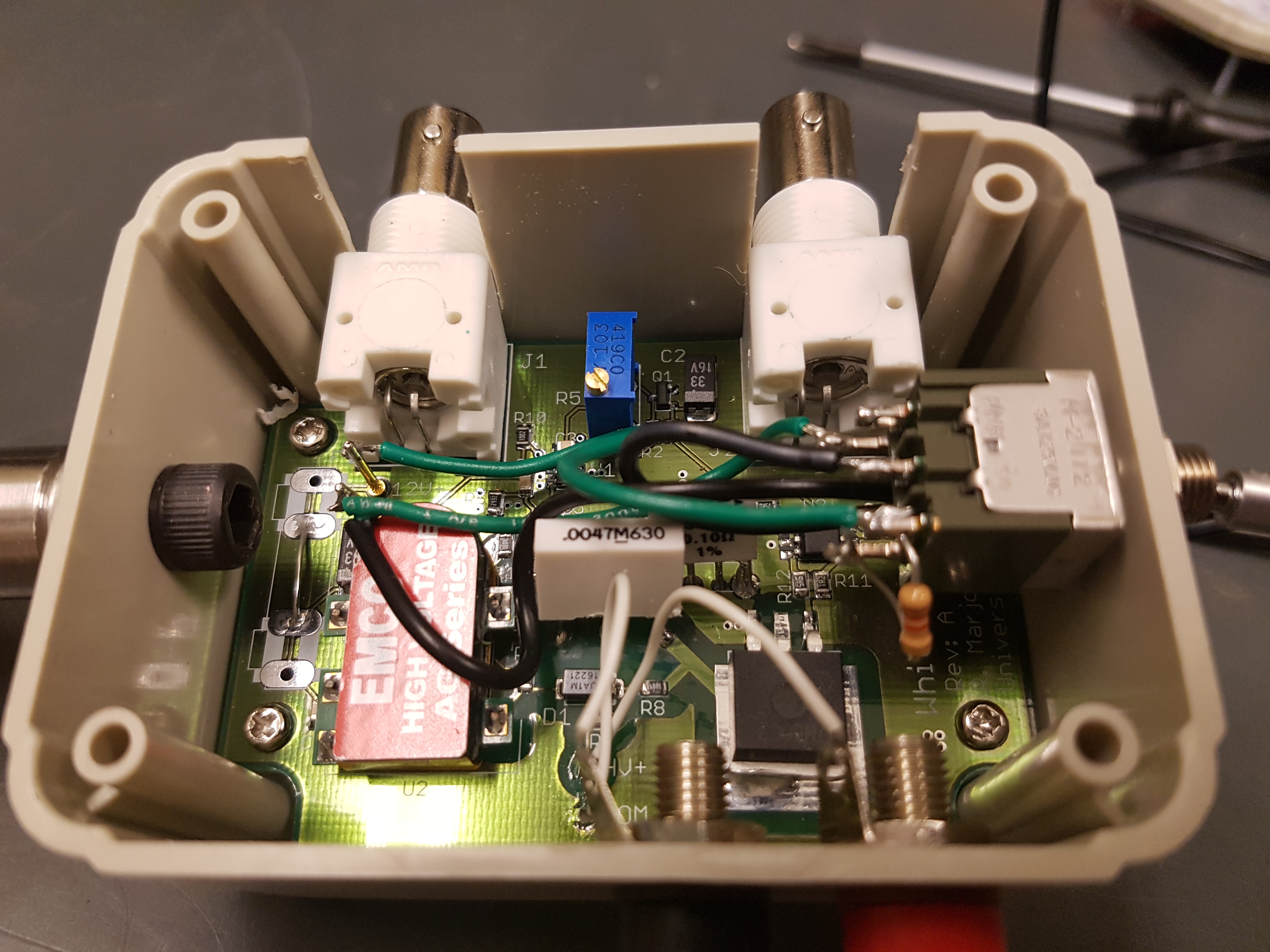

|
 Alan Stummer
Alan Stummer
Research Lab Technologist |
|

|
White Flash |

|
Downloads
|
I am curious who uses what. Are these webpages a waste of time, or are they any help to others? Are the circuits, software and utilities appearing in other labs? Please send your comments or suggestions or what you have used (or not) or schematics of your version or pictures or anything! Email me, or be creative and send a postcard! I want to hear from the vacuum! |
Links
|
|
NOTICE: This webpage and associated files are provided for reference only. This is not a kit site! It is a collection of my work here at the University of Toronto in the Physics department. If you are considering using any schematics, designs, or anything else from here then be warned that you had better know something of what you are about to do. No design is guaranteed in any way, including workable schematic, board layout, HDL code, embedded software, user software, component selection, documentation, webpages, or anything. All that said, if it says here it works then for me it worked. To make the project work may have involved undocumented additions, changes, deletions, tweaks, tunings, alterations, modifications, adjustments, waving of a wand while wearing a pointy black hat, appeals to electron deities and just plain doing whatever it takes to make the project work. |
||
Started for Jeremy Li in Robin's lab. Drives a high power LED in a short 60nS burst. A capacitor is charged to 100-200V then discharged into a LED with current rise and fall times about 20nS.
An on-board
converter
generates a high voltage (HV), adjustable by an internal trimpot up to 200V, although untested it can go higher. Please turn
the unit off when not in use to prevent tracking (extreme case shown
here). This HV charges a 4.7nF polymer film capacitor. The Trigger input, on a BNC, is the externally provided
pulse of 100nS-1uS. This Trigger is the input to a
FET driver capable of 20nS rise and fall times and up to 10A gate drive. This FET driver drives - not surprisingly
- a
FET. The FET effectively discharges the HV capacitor through the
LED. Photodiode (PD) analysis of the LED light shows that it is probably flourescent, indicated by the
relationship between the LED's current and light. Speaking which, the LED current is sensed by a 4-wire 0.1Ω
resistor an appears on the Current BNC. Do not take this as gospel, empirically the current measured does not
fully agree with the light and the rest of the circuit, use this Current BNC as an indication only.
Return to homepage
| Sorry, no more chance for asking direct questions, queries, broken links, problems, flak, slings, arrows, kudos, criticism, comments, brickbats, corrections or suggestions. |

|

